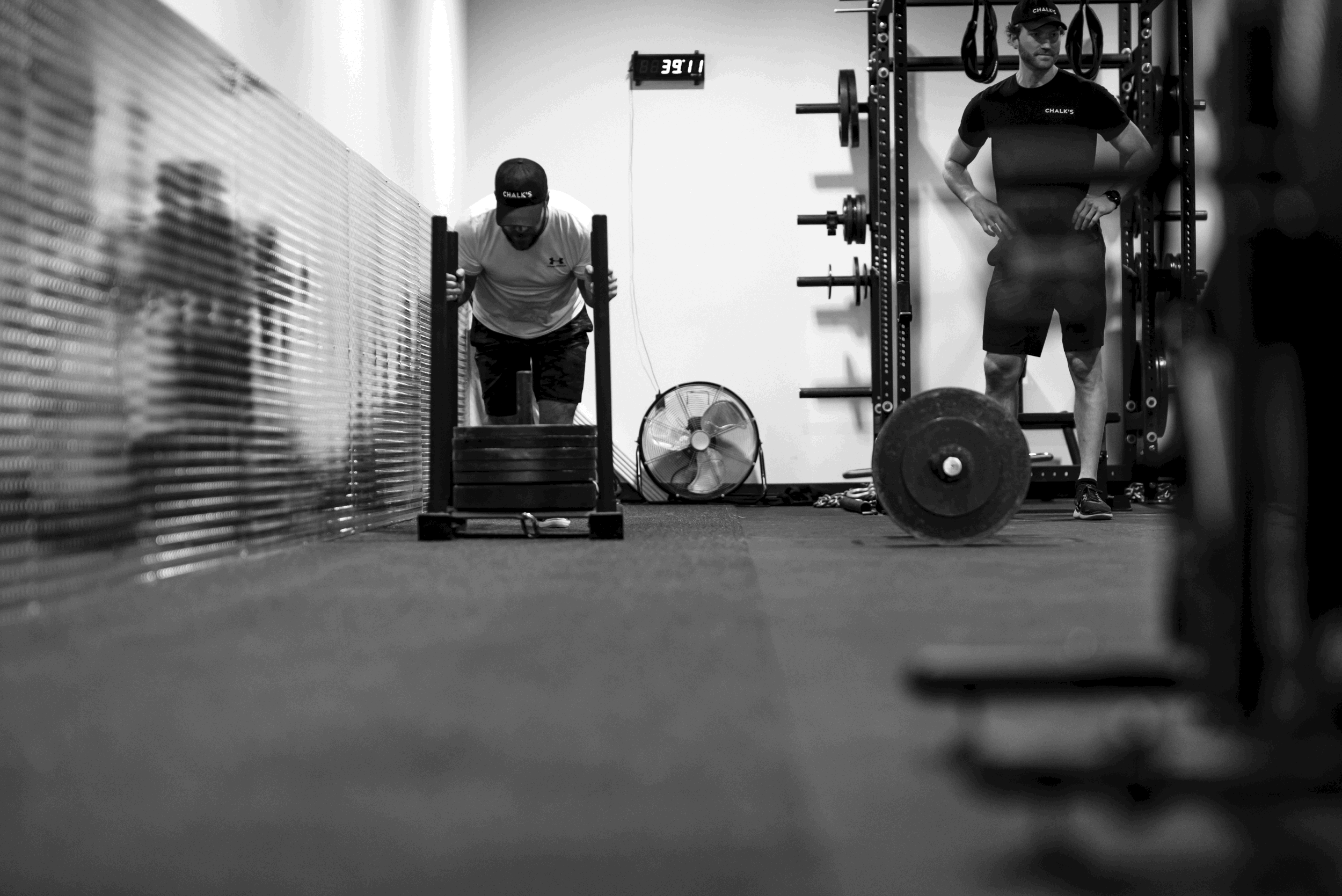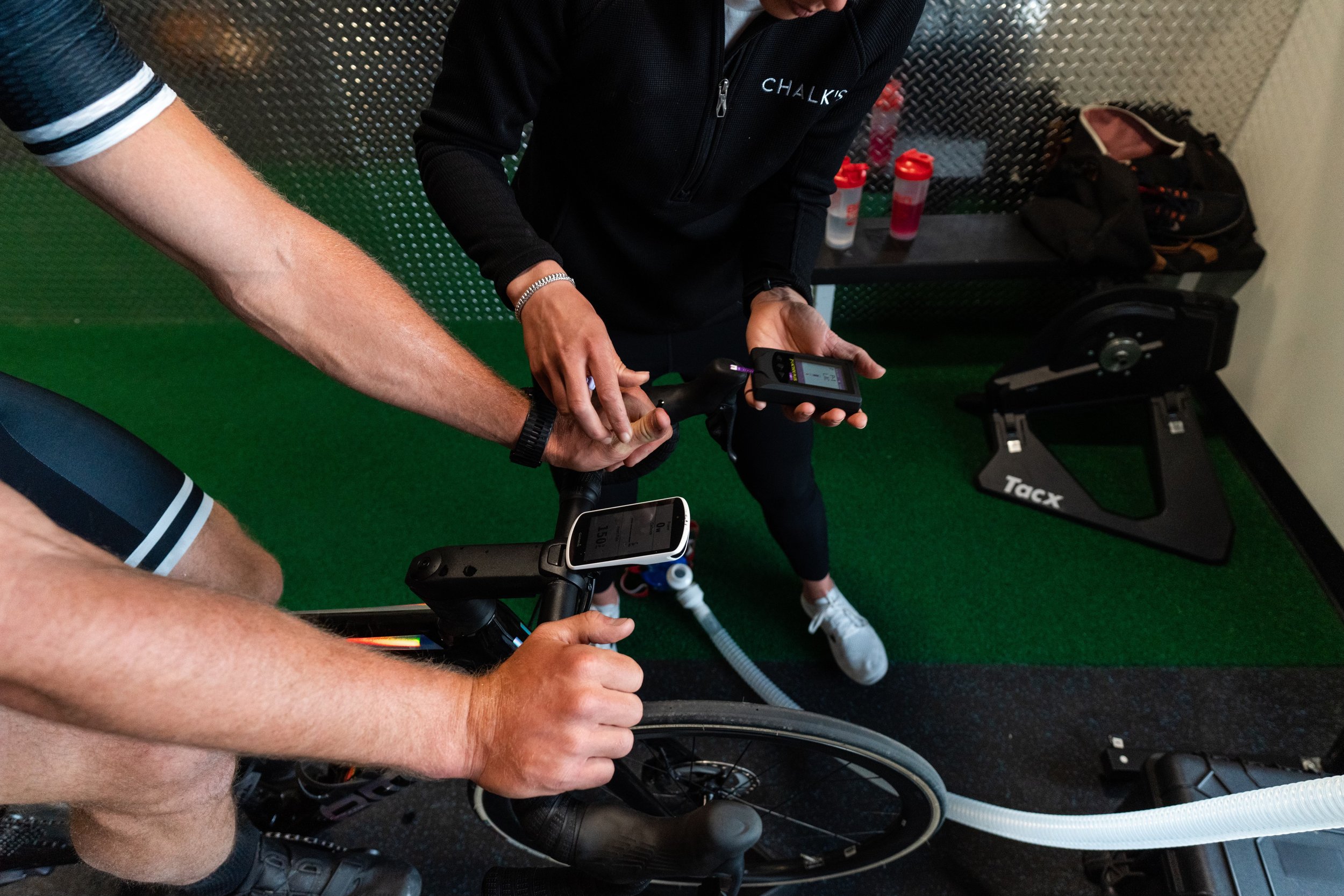VO₂ TESTING
Test consists of:
10-15 minute Treadmill/Bike test, incrementally increasing in intensity
Can be performed on bike trainer with individual’s own bike
You will receive:
VO2 Max
Heart Rate zones based on max heart rate
Understanding of portion of energy (calories) derived from carbohydrates vs. fat during each exercise level of intensity
Aerobic and Anaerobic threshold levels
VO₂ Max
A VO2 Max Test is a measurement that reflects a person’s ability to perform sustained exercise. It is generally considered the best indicator of cardiovascular fitness and aerobic endurance. VO2 Max is the maximum rate of oxygen consumption that can be attained during the most intense exercise possible It is suitable for a wide range of individuals, from the sedentary to elite athletes. An initial VO₂ Max test can clarify the precise target heart rates that will enable each individual to exercise more effectively, with less fatigue and fewer injuries. Periodic retesting provides motivating feedback as the fitness program progresses. The measurement requires that the subject breathe into an oxygen consumption analyzer during an all-out effort (usually on a treadmill or bicycle) as part of a graded exercise protocol. These protocols involve specific increases in the speed and intensity of the exercise. While exercising, the person wears a mask to collect all the air he/she breathes in and out for a measurement of the volume of exhaled gas and the concentration of oxygen in that exhaled gas. This determines how much oxygen is used during each minute of the exercise test.
When the person is no longer able to keep up with the oxygen demands of his/her muscles and complete fatigue forces him/her to stop exercising, then his oxygen consumption has reached a maximum, and VO2 Max can be calculated. The test usually takes between 10 and 15 minutes. The test also determines the number of calories burned during every level of exercise, providing valuable information when designing a weight loss program. It can determine the proportion of energy coming from carbohydrates and fats at various levels of exercise intensity. Since physical conditioning and exercise intensity affect these proportions, this information can be very helpful when designing a workout intended to burn fat.
For more information on Korr Medical click here : https://korr.com/resources/understanding-vo2-max/
Lactate Testing
Lactate is a by-product measured by sport scientists or coaches to evaluate workouts and profile athletes during fitness testing. Lactate is not the cause of fatigue, but does correlate with the decay of work, thus making it a biomarker for performance. Lactate testing is done with endurance athletes to calculate their lactate threshold, or the intensity of experience before the lactate increases exponentially. The primary benefit of lactate testing is getting a simple summary of how the body is coping with the workload for comparative purposes. We look at the level of work (watts for cycling, or pace for running) it takes to produce lactate. Once achieved, we can train around this level in order to produce the desired cardiovascular response.
Lactate Test consists of a relatively low intensity ramp test, increasing intensity every 10 minutes until the desired amount of lactate is achieved. Once we obtain this spike in lactate levels, the test is over.



